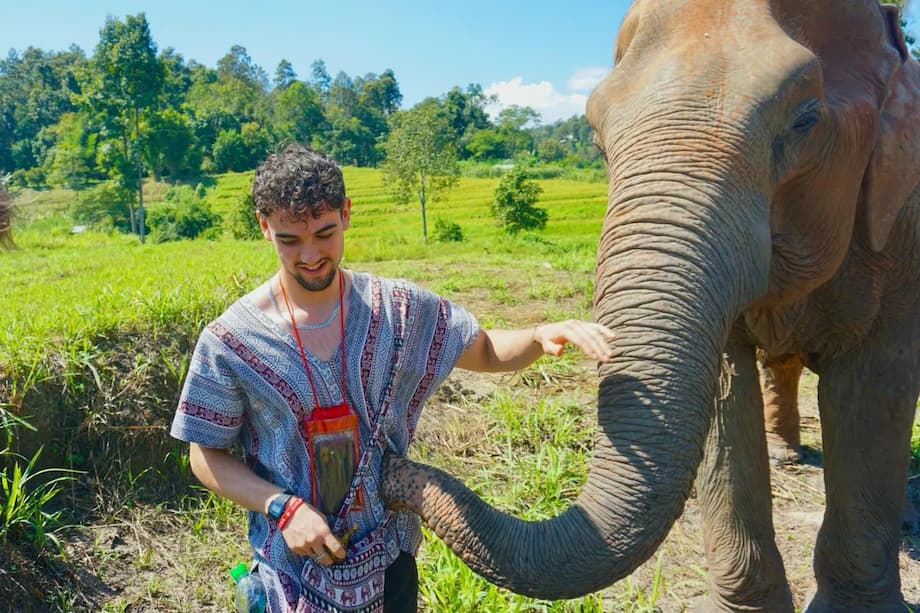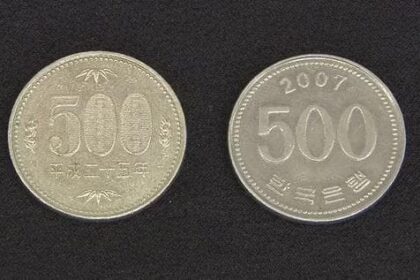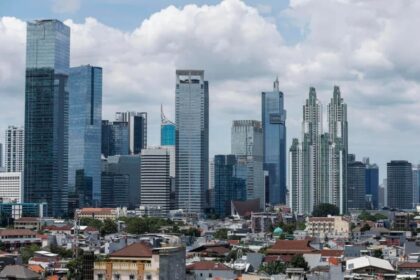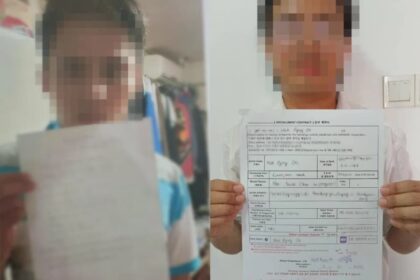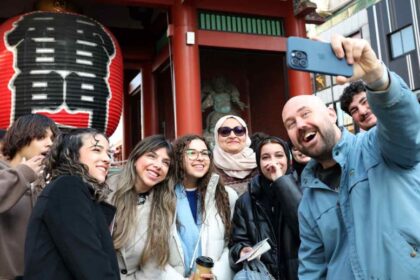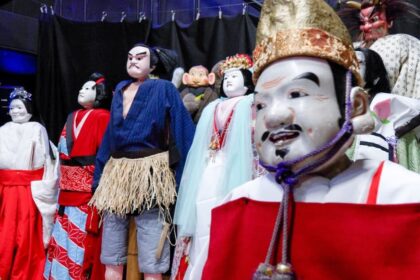The Deadly Cost of Cheap Spirits: A Survivor’s Story and a Regional Crisis
When Calum Macdonald crossed the border from Laos into Vietnam, he was already losing his sight. The 23-year-old British backpacker had just spent a night at a popular hostel in Vang Vieng, a town known for its party scene along the Nam Song River. Like many travelers before him, he accepted free shots of whisky and vodka—hospitality that would change his life forever. By the time he reached his hotel in Vietnam, Calum was blind, unable to see anything but a kaleidoscopic, blinding light. He was one of several victims of a mass methanol poisoning that claimed six lives and left others, including himself, with permanent disabilities. The tragedy has cast a harsh spotlight on a persistent and preventable danger lurking in Southeast Asia’s vibrant tourist hotspots: tainted alcohol.
- The Deadly Cost of Cheap Spirits: A Survivor’s Story and a Regional Crisis
- What Happened in Vang Vieng?
- Understanding Methanol: The Invisible Killer
- Why Is Methanol in Alcoholic Drinks?
- A Widespread and Underreported Problem
- Tourism, Regulation, and the Challenge of Enforcement
- Healthcare Gaps and the Race Against Time
- Personal Stories: Loss, Survival, and Advocacy
- How Can Travelers Protect Themselves?
- Can the Problem Be Solved?
- In Summary
What Happened in Vang Vieng?
In November 2024, a series of deaths among foreign tourists in Vang Vieng, Laos, sent shockwaves through the global backpacker community. The victims—two Australians, two Danes, a Briton, and an American—had all stayed at or visited the Nana Backpacker Hostel, where free alcoholic drinks were offered to guests. Reports indicate that the drinks, particularly vodka and whisky, were contaminated with methanol, a highly toxic form of alcohol often used in industrial products like antifreeze and solvents.
Calum Macdonald survived but lost his sight. Others, like Simone White, a 28-year-old British lawyer, and two Danish women in their early twenties, were not so fortunate. The Australian teenagers, Holly Bowles and Bianca Jones, both 19, became gravely ill after a night out and were evacuated to Thailand for treatment. Bianca died from brain swelling caused by methanol poisoning; Holly remained in critical condition for days.
The hostel’s manager and several staff members were arrested as authorities scrambled to investigate the source of the tainted alcohol. The Laotian government banned the sale of Tiger Vodka and Tiger Whisky, believed to be the source of the poisonings, and shut down the implicated factory. Yet, the tragedy was only the latest in a long line of similar incidents across the region.
Understanding Methanol: The Invisible Killer
Methanol, also known as wood alcohol, is a colorless, odorless liquid used in industrial and household products. Unlike ethanol—the type of alcohol found in beer, wine, and spirits—methanol is highly toxic to humans. Ingesting as little as 25 to 30 milliliters (about half a shot glass) can cause blindness, organ failure, or death. The danger is compounded by methanol’s similarity to ethanol in taste and smell, making it nearly impossible to detect in a drink without specialized equipment.
Symptoms of methanol poisoning often mimic those of a hangover at first: dizziness, nausea, headaches, and fatigue. Within 12 to 48 hours, however, more severe effects can set in, including blurred vision, seizures, coma, and death. As Calum Macdonald’s experience shows, vision loss can be sudden and permanent. If diagnosed early—ideally within 10 to 30 hours—methanol poisoning can sometimes be treated with dialysis and antidotes like fomepizole or ethanol, which slow the body’s conversion of methanol into its toxic byproducts. Unfortunately, such treatments are rarely available in the rural or under-resourced hospitals of Southeast Asia.
Why Is Methanol in Alcoholic Drinks?
Methanol is not intended for human consumption, but it can end up in drinks through two main routes:
- Poor Distillation Practices: During the production of homemade or bootleg spirits, methanol is naturally produced alongside ethanol. Proper distillation techniques remove methanol, but rushed or unskilled distillers may leave dangerous levels in the final product.
- Deliberate Adulteration: Unscrupulous producers sometimes add methanol to increase the strength of cheap spirits or to cut costs, especially in countries where taxes on legal alcohol are high. Methanol is cheaper than ethanol, making it an attractive but deadly substitute for profit-seeking vendors.
In the case of Vang Vieng, authorities suspect that the contaminated drinks were either poorly distilled or deliberately adulterated. The hostel’s owner denied any wrongdoing, but police investigations and the subsequent ban on certain brands suggest systemic problems in the supply chain.
A Widespread and Underreported Problem
Methanol poisoning is not unique to Laos. According to Médecins Sans Frontières (Doctors Without Borders), Asia has the highest prevalence of methanol poisoning worldwide, with outbreaks reported annually in Indonesia, India, Cambodia, Vietnam, and the Philippines. In 2018, more than 100 people died in a single incident in Indonesia. In June 2024, about 60 people died and over 200 were hospitalized in India. The true scale of the problem is likely much larger, as many cases go unreported, especially among local populations who rely on cheap, unregulated alcohol.
Tourists are particularly vulnerable in party towns like Vang Vieng, where the backpacker economy thrives on cheap drinks and a carefree atmosphere. Free shots and discounted cocktails are common marketing tactics, but they can mask the dangers of unregulated alcohol. As Dr. Chenery Ann Lim from Doctors Without Borders warned, “These deaths are only the tip of the iceberg, as many cases go unreported and affect locals as well as tourists.”
Tourism, Regulation, and the Challenge of Enforcement
Laos, like many of its neighbors, relies heavily on tourism. In 2024, the country welcomed around 5 million visitors, generating $1 billion in revenue. Vang Vieng, once infamous for its wild river parties and lax safety standards, has tried to reinvent itself as an eco-tourism destination. Yet, the lure of cheap alcohol and the persistence of unregulated bars and hostels continue to pose risks.
Regulatory enforcement is weak. Local law enforcement agencies are often under-resourced, and food and alcohol safety standards are poorly enforced. After the November 2024 poisonings, the Laotian government took the rare step of banning specific brands and arresting hostel staff, but such measures are reactive rather than preventive. The owner of Nana Hostel denied adding methanol to drinks, and police checked alcohol at the hostel and its suppliers, but the broader problem of illicit alcohol production remains.
International pressure has prompted some changes. Several Western governments, including Australia, the UK, and the US, updated their travel advisories to warn about the risks of methanol poisoning in Laos and other Southeast Asian countries. The US Embassy in Laos issued a health alert, urging travelers to buy alcohol only from licensed establishments and to avoid homemade or suspiciously cheap drinks.
Healthcare Gaps and the Race Against Time
One of the most tragic aspects of methanol poisoning is that it is treatable—if caught early and if proper medical care is available. Unfortunately, the standard of healthcare in Laos and much of rural Southeast Asia is poor. Many hospitals lack the equipment and expertise to diagnose and treat methanol poisoning. Victims often have to be evacuated to neighboring countries like Thailand, but the delay can be fatal.
As The Week reported, the country’s underfunded healthcare system and lack of skilled professionals make it difficult to respond effectively to such emergencies. Even private hospitals may not have the necessary antidotes or dialysis equipment. According to Kate Fitzpatrick, Security Director at World Travel Protection, “Swift action and transfer to a medical facility with the appropriate treatment is essential. Medical assistance providers should be training their personnel to recognize potential symptoms in travelers reporting illness in these regions.”
Personal Stories: Loss, Survival, and Advocacy
The human cost of methanol poisoning is devastating. Calum Macdonald’s story is one of survival, but also of profound loss. He is now learning to use a cane and hopes to apply for a guide dog. Despite his blindness, he feels grateful to be alive and is working with the families of other victims to raise awareness. “Learning of the deaths of others changed my perspective about my blindness,” he said. “I feel a responsibility to try and prevent the same thing from happening to other people.”
Simone White’s mother, Sue, has become an advocate for greater awareness of the risks. After losing her daughter, she campaigns for clearer travel warnings and better education for tourists. The families of the Australian victims have also spoken out, describing their daughters as adventurous and joyful, and calling for justice and accountability.
How Can Travelers Protect Themselves?
While the responsibility for safe alcohol production lies with governments and producers, travelers can take steps to reduce their risk:
- Buy alcohol only from licensed liquor stores and reputable bars or hotels.
- Avoid homemade or unbranded spirits, especially those offered for free or at unusually low prices.
- Check that bottle seals are intact and labels are professionally printed.
- Be wary of mixed drinks and cocktails, which can be easily adulterated.
- Opt for canned or bottled beer, cider, wine, or duty-free products, which are less likely to be tampered with.
- If you experience symptoms like blurred vision, severe headache, or vomiting after drinking, seek medical attention immediately and mention the possibility of methanol poisoning.
Travelers should also consult updated government travel advisories before visiting countries where methanol poisoning is a known risk. The UK’s Foreign, Commonwealth & Development Office, for example, urges travelers to exercise caution and avoid homemade alcoholic drinks in Laos and neighboring countries.
Can the Problem Be Solved?
Methanol poisoning is a senseless and easily preventable tragedy. Experts agree that the solution lies in a combination of stricter regulation, better enforcement, public awareness campaigns, and improved healthcare infrastructure. Some countries have begun to take action: after the Vang Vieng incident, Laos banned the implicated brands and arrested those involved. But without sustained efforts to regulate alcohol production and educate both locals and tourists, the risk remains.
Dr. Chenery Ann Lim of Doctors Without Borders emphasized the need for ongoing vigilance: “Efforts to address the issue include inspections, public awareness campaigns, and equipping hospitals with antidotes. Both locals and tourists are at risk, especially when consuming cheap or homemade alcohol.”
Tourism operators, travel insurers, and governments all have a role to play in raising awareness and ensuring that travelers are informed of the risks. Partnerships with local organizations and international agencies can help build capacity for prevention and response.
In Summary
- Methanol poisoning is a persistent and deadly risk in Southeast Asia, particularly in tourist hotspots with unregulated alcohol markets.
- The November 2024 incident in Vang Vieng, Laos, resulted in six tourist deaths and several severe injuries, highlighting the dangers of tainted spirits.
- Methanol is a toxic alcohol that can cause blindness, organ failure, and death, often without immediate symptoms.
- Poor distillation practices and deliberate adulteration are the main causes of methanol contamination in drinks.
- Healthcare gaps and slow emergency response increase the fatality rate among victims.
- Travelers can protect themselves by avoiding homemade or suspiciously cheap spirits and by seeking medical help immediately if symptoms arise.
- Stronger regulation, public awareness, and improved healthcare are essential to prevent future tragedies.


